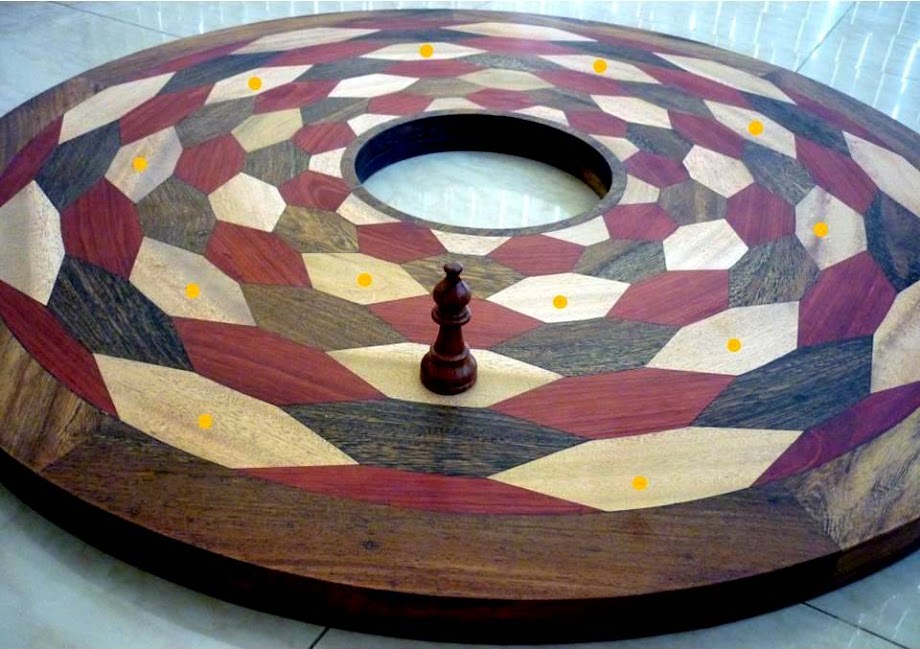The Pawn only moves forward in its specific direction. The Pawns positioned on hexagonal cells on angles e, f, o and p can be moved clockwise. The Pawns positioned on hexagonal cells on angles a, b, j and l can be moved anticlockwise;
Coronation of the Pawn - The Pawn when arriving at angles c, d, m or n it leaves the board, giving place to the other piece, except the King, to be chosen by the player.
Capture - When one piece occupies a hexagonal cell occupied by an opposing piece, this piece leaves the board and it means that it has been captured.
Check / Checkmate - When a piece threatens to capture the opposing King (King in check), the player shall say the word "check" and indicate which piece that is threatening, if necessary. In the following move, the opponent must necessarily move, protect the King (by placing a piece between the King and the piece that threatens the King), or capture the piece that threatens the King. If it is impossible to avoid the menace, Checkmate is said. In this case, the player in that situation loses the game.
Rules
1- Objective - The players have as objective:
- (1) to checkmate (to see further on) the opponent, or
- (2) to impede that the opponent player moves any of his pieces, or
- (3) to capture all opponent player's pieces, except King (King alone).
2- All the pieces capture the same way they move;
3- "En passant" captures are allowed.;
4- Pawn promotes when arriving at angles c, d, m or n.
5- There is no castling.
Win - The player wins the game when the opponent: (1) receives checkmate, (2) cannot move any of his pieces, (3) loses all his pieces (king alone) and soon after the next move he cannot capture the last piece of the other player, or (4) gives up the game (abandons), at any moment.
Tie - The tie can happen when: (1) there are insufficient pieces to win, (2) there is a repetition of move by 3 serial times, (3) the king alone (the player loses his pieces) and soon after the next move the player must capture the last piece of the other player (King x King), or (4) one of the players proposes tie to the opponent, what can happen at any moment of the game, and it is accepted by him.









